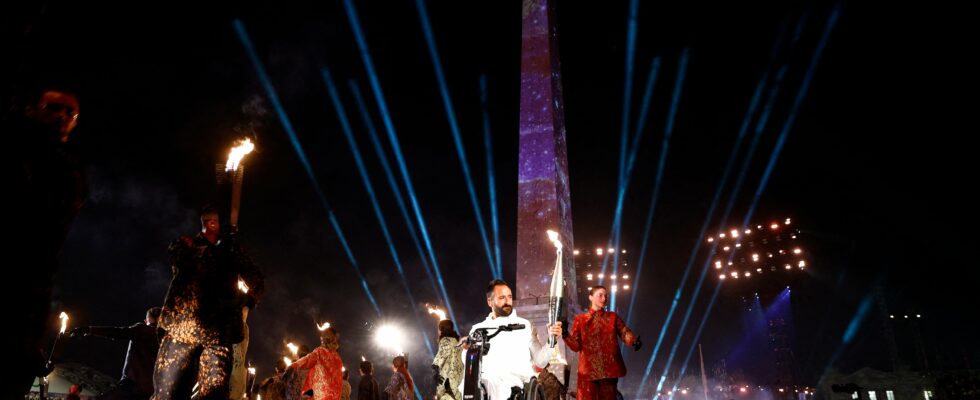Paris launched its first Paralympic Games on Wednesday, August 28, in front of a superb panorama, hoping to prolong the festive spirit of the Olympic Games and raise awareness of the cause of disability.
In total, 140 dancers, including 16 with disabilities, and 4,400 para-athletes from 182 delegations performed from the Champs Élysées to the Place de la Concorde. Called “Paradoxe”, the show lasted more than three hours. The opening ceremony began with a film showing disabled swimmer Théo Curin in a taxi covered in Phryges, the event’s mascots.
Chilly Gonzales surrounded by dancers with disabilities
In a bathrobe and black slippers over a white garment, the unclassifiable Canadian artist and Daft Punk collaborator then performed “Countdown” on the piano, a piece composed by Victor Le Masne, the custodian of the musical signature of the Paris Olympic and Paralympic Games. Able-bodied dancers and dancers with disabilities performed around him.
Chris sings his version of “Non, je ne regrette rien” by Edith Piaf
The stage also hosted the performance of the artist Christine and The Queens, dressed all in red and perched on a piano, on “Non rien de rien”, an electro-pop version of “Non, je ne regrette rien” sung by Edith Piaf.
The parade of athletes and the French patrol
The 4,400 para-athletes paraded from the Champs-Élysées to the Concorde, welcomed by the Patrouille de France at sunset. DJ Myd officiated behind the decks, a huge blue-white-red cape, the colours of the French flag, on his shoulders, ending in a long train at the foot of the obelisk.
The French delegation received a standing ovation as it entered the square. “Our legs were starting to hurt from waiting. Having this cheer, this energy from the crowd, we forgot everything and enjoyed the moment, it was a crazy boost of energy. We can’t wait to experience it in competition,” para-judoka Hélios Latchoumanaya told AFP.
Lucky Love’s moving performance
“What’s wrong with my body? Am I not enough?” asks the artist Lucky Love, performing his song “My ability”. On one side, 140 able-bodied dancers – black suits, sunglasses, locked in repetitive and jerky movements, as if rigid to change. On the other, about fifteen disabled artists, dressed in blue, white, red or gold, on crutches or in wheelchairs, who form a joyful band dancing in a loose and liberated manner. A performance at the end of which the singer throws off his jacket to show his missing left arm.
The arrival of the flame on Sébastien Tellier
With long hair, dark glasses and a sequined cap, the figure of the French touch Sébastien Tellier played “La ritournelle”, his suave electro-pop hit, to escort the arrival of the flame towards the end of the ceremony.
Swimmer Florent Manaudou is in charge of the relay between the Olympic and Paralympic Games: he passes the flame to former wheelchair tennis champion Michael Jeremiasz, before international parasport figures such as Italian fencer Bebe Vio, American para-cyclist Oksana Masters and German athlete Markus Rehm take turns, heading to the Tuileries Gardens before the lighting of the Olympic cauldron.
Christine and the Queens also closed with “Born to Be Alive”
And finally, Christine and the Queens reappeared just after the lighting of the cauldron to perform “Born to be alive”, the disco hit by Patrick Hernandez, under the light of the fireworks marking the end of the ceremony.
